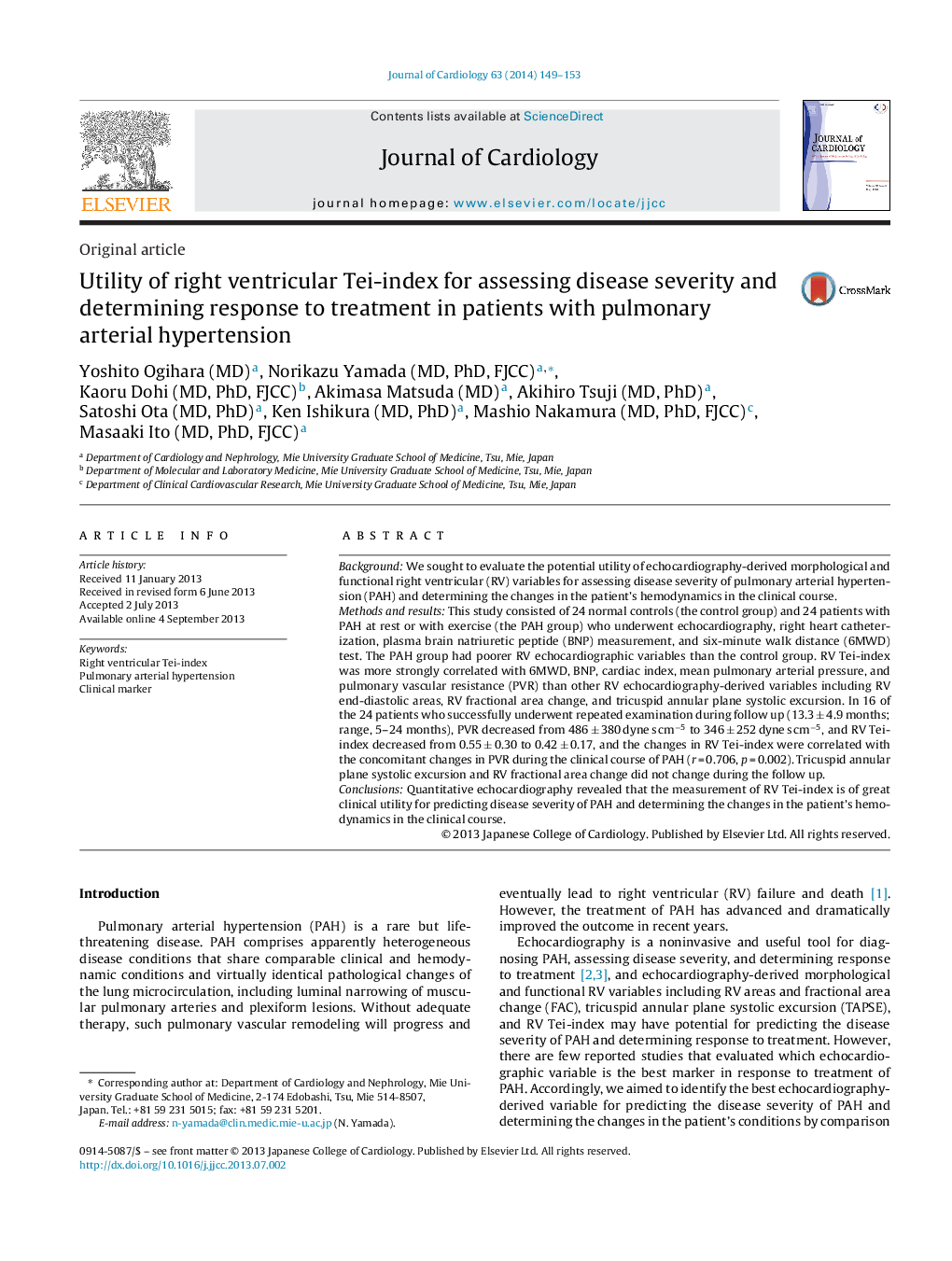| Article ID | Journal | Published Year | Pages | File Type |
|---|---|---|---|---|
| 5984132 | Journal of Cardiology | 2014 | 5 Pages |
BackgroundWe sought to evaluate the potential utility of echocardiography-derived morphological and functional right ventricular (RV) variables for assessing disease severity of pulmonary arterial hypertension (PAH) and determining the changes in the patient's hemodynamics in the clinical course.Methods and resultsThis study consisted of 24 normal controls (the control group) and 24 patients with PAH at rest or with exercise (the PAH group) who underwent echocardiography, right heart catheterization, plasma brain natriuretic peptide (BNP) measurement, and six-minute walk distance (6MWD) test. The PAH group had poorer RV echocardiographic variables than the control group. RV Tei-index was more strongly correlated with 6MWD, BNP, cardiac index, mean pulmonary arterial pressure, and pulmonary vascular resistance (PVR) than other RV echocardiography-derived variables including RV end-diastolic areas, RV fractional area change, and tricuspid annular plane systolic excursion. In 16 of the 24 patients who successfully underwent repeated examination during follow up (13.3 ± 4.9 months; range, 5-24 months), PVR decreased from 486 ± 380 dyne s cmâ5 to 346 ± 252 dyne s cmâ5, and RV Tei-index decreased from 0.55 ± 0.30 to 0.42 ± 0.17, and the changes in RV Tei-index were correlated with the concomitant changes in PVR during the clinical course of PAH (r = 0.706, p = 0.002). Tricuspid annular plane systolic excursion and RV fractional area change did not change during the follow up.ConclusionsQuantitative echocardiography revealed that the measurement of RV Tei-index is of great clinical utility for predicting disease severity of PAH and determining the changes in the patient's hemodynamics in the clinical course.
